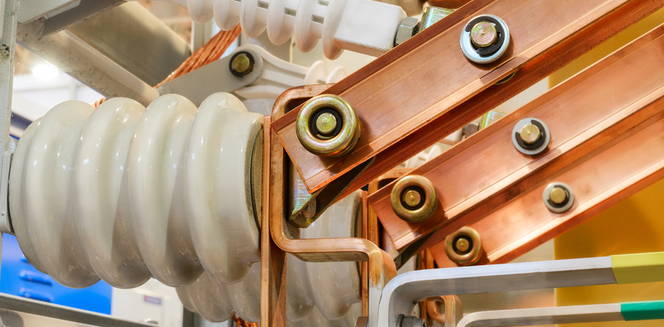Technical Ceramics: The Core Of Every Futuristic Technological Innovation

28 Aug
2020
The use of ceramic is not just limited to make cups and mugs in pottery class and making large vases that store years and years of dust on your grandmother’s shelf. Mankind has been exploiting the earth to collect ceramic that can be used in armors, electronics, lasers, and more. The high-performance or engineering ceramic a.k.a technical ceramics are inorganic materials whose thermal and physical properties make them the best choice for developing electronics where other known materials often fall short. Technical ceramics have open limitless possibilities for plant and mechanical engineering, automotive manufacturing, medical technology, and textile manufacturing. What’s more, technical ceramics are the backbone of all the futuristic technologies such as artificial intelligence (AI) and 5G infrastructure.
According to Allied Market Research, the technical ceramics market is expected to reach $13.09 billion by 2026, registering a CAGR of 6.20% from 2019 to 2026. That’s because of the emergence of technical ceramics as a substitute to metal and surge in demand from several end-use industries.
Technical ceramics for AI development
AI has finally come out of the science-fiction stories and become reality. The rise of virtual assistants in the commercial sectors and digital spaces has brought the use of AI from theory to practical conversation. However, the primary barrier to these technologies is the power source. The power consumed by today’s leading AI programs is as high as 250 kW; our brain just consumes merely 20 W. This saddening gap between power consumption makes the AI technology quite unsustainable.
On the contrary, memory chip manufacturers aim to use technical ceramic to develop non-volatile, durable, fast, and low-power consuming memory chips. Moreover, technical ceramic has the potential to replace conventional silicon-based memory chips for a sustainable foundation for AI.
Technical ceramics for the Internet of Things (IoT)
Internet of Things (IoT) has quickly gained popularity and irreplaceable space in our daily lives. Moreover, with the advent of 5G, IoT devices would unlock new opportunities and take connectivity to a whole new level.
Technical ceramics could assist in the growth of interconnectivity and the demand for complete autonomy. From driverless vehicles to wearable devices, every device, every application is now connected. For these devices to work without latency and for a long period, there is a dire need for electro-ceramics, millimeter-scale components that can withstand at high temperature and pressure. Similarly, IoT demands constants, high-frequency communication with miniaturized devices, where traditional silicon-based components can no longer work. However, the technical ceramics can fit perfectly in these devices.
Industry 4.0 and technical ceramics
IoT, AI, and 5G infrastructure, all these niches under the umbrella of the fourth industrial revolution or as we call it Industry 4.0. The world is developing new age of mechanical networking for offering complete autonomy and smart technology at fingertips, which demands improved machines and automation using AI and IoT. Just like IoT and AI, technical ceramics are at the core of Industry 4.0 and hold the key to unlock the true digital transformation of mechanical processes.
All the futuristic technological innovations demand sustainable hardware that can hardly be fulfilled by silicon-based materials. This increased demand for technological ceramics and additive manufacturing as well. The customization offered by 3D printing or additive manufacturing offers a new way for customers to try technical ceramics without making a huge capital investment. Moreover, 3D printing allows them to make even the smallest parts of electronics, unlike traditional manufacturing methods. Thus, the combination of 3D printing and technical ceramic is expected to define the future of advanced electronics.

Koyel Ghosh
Author’s Bio- Koyel Ghosh is a blogger with a strong passion and enjoys writing in miscellaneous domains, as she believes it lets her explore a wide variety of niches. She has an innate interest in creativity and enjoys experimenting with different writing styles. A writer who never stops imagining, she has been serving the corporate industry for the last five years.
Avenue: Entire Library membership of Allied Market Research Reports at your disposal
- Avenue is an innovative subscription-based online report database.
- Avail an online access to the entire library of syndicated reports on more than 2,000 niche industries and company profiles on more than 12,000 firms across 11 domains.
- A cost-effective model tailored for entrepreneurs, investors, and students & researchers at universities.
- Request customizations, suggest new reports, and avail analyst support as per your requirements.
- Get an access to the library of reports at any time from any device and anywhere.
Related Post
-
How are Submarine Cables Transforming Global Connectivity with Enhanced User Experience?
-
Endoscopy Procedures: Transformations in Techniques and Applications
-
AI-Powered Video Analytics: How the Product Actually Works for enterprises
-
Painting Robots: Transforming Precision Coating and Creative Applications
-
Innovations in Pharmacovigilance Systems Advancing Patient Safety
-
Understanding Edge Security: Keeping Data Safe Near the Source
-
Exploring the Use and Advancements of 3D Laser Scanners in Professional Applications
-
Reinforcing Industrial Controls with Smarter Tools and Training








